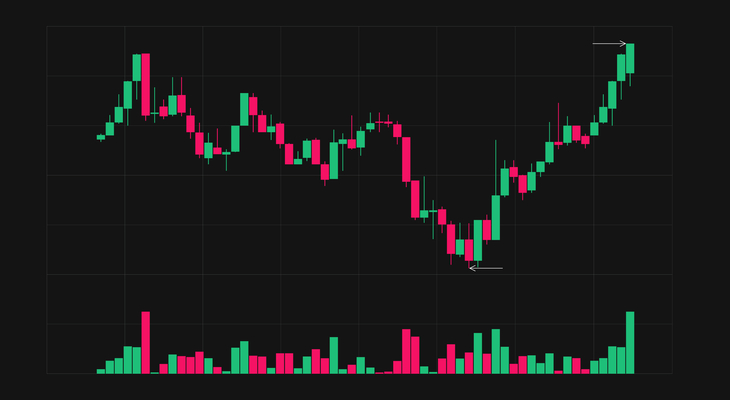The world of trading is full of opportunities and risks, and investing in penny stocks is no exception. Penny stocks are securities that trade at low prices and have a small market capitalization. Although they can offer significant potential rewards, penny stocks can also be subject to price manipulation and volatility, making them a challenging investment for many traders.
One strategy that traders use to profit from penny stocks is shorting. Shorting involves borrowing shares of a stock and selling them, with the hope of buying them back at a lower price to make a profit. However, shorting penny stocks can be a risky strategy that requires careful consideration and risk management.
In this article, we will explore the characteristics of penny stocks, shorting strategies, and techniques for managing risk to help traders navigate the world of shorting penny stocks and potentially reap the rewards.
Key Takeaways
- Shorting penny stocks involves significant risks and requires sound risk management strategies.
- Penny stocks are prone to price manipulation and insider trading, which can result in unexpected losses.
- Diligent research, technical trading skills, and an understanding of candlestick formations are important for short sellers.
- Shorting penny stocks can offer potential for high returns, but it also comes with a high risk of losing money.
Penny Stock Characteristics
The characteristics of penny stocks, including their low market capitalization, high volatility, and lack of liquidity, are important factors to consider when evaluating the risks and rewards of shorting these securities as a trading strategy.
Penny stocks are typically issued by small companies with limited financial resources, making them prone to price manipulation and insider trading. This can result in sudden and significant price movements, which can be both beneficial and detrimental to short sellers.
Additionally, the lack of liquidity in penny stocks means that buying and selling these securities can be challenging, particularly in large quantities. This can lead to wider bid-ask spreads, making it difficult to execute trades at the desired price.
Market volatility can also exacerbate these issues, as sudden price movements can result in significant losses for short sellers who are unable to exit their positions quickly. As such, careful risk management and diligent research are essential when shorting penny stocks.
Shorting Strategies
One effective approach to shorting involves implementing sound risk management strategies that limit exposure to potential losses. Shorting penny stocks can be a risky endeavor, so it’s important to have a plan in place to mitigate those risks. One strategy is to use stop-loss orders, which automatically sell the stock if it reaches a certain price point. This can help limit potential losses and prevent emotions from clouding judgment.
Another strategy is to identify market trends and short stocks that are likely to experience a downturn. This requires technical trading skills and an understanding of candlestick formations. It’s important to conduct thorough research on companies and their financials, as well as keeping an eye out for short squeeze tactics and social media campaigns that can artificially inflate the price of penny stocks. By employing these strategies and staying diligent in risk management, shorting penny stocks can be a profitable trading strategy.
| Pros of Shorting Penny Stocks | Cons of Shorting Penny Stocks |
|---|---|
| Potential for high returns | High risk of losing money |
| Ability to profit from market downturns | Price manipulation can lead to unexpected losses |
| Opportunity to diversify investment portfolio | Most penny stocks are worthless securities |
This table highlights the potential risks and rewards of shorting penny stocks. While there is a chance to profit from market downturns and diversify a portfolio, there is also a high risk of losing money due to price manipulation and the fact that most penny stocks are not legitimate companies. It’s important to weigh these factors carefully and implement sound risk management strategies before deciding to short penny stocks.
Risk Management and Techniques
Implementing effective risk management techniques is crucial when engaging in the strategy of short selling, as it can be a high-risk endeavor that requires careful consideration of potential losses.
One key risk management tool for short sellers is the use of stop loss orders, which automatically execute a trade once the stock’s price reaches a certain level. This helps limit losses and prevent them from spiraling out of control.
Additionally, technical analysis can be useful in identifying potential entry and exit points for short positions, as well as determining the overall market trend.
While short selling may come with its risks, some traders argue that the potential for high returns outweighs the dangers involved. However, it’s important for investors to approach short selling with caution and to diligently research potential targets before taking a position.
By implementing proper risk management techniques and conducting thorough analysis, traders can increase their chances of success and minimize the potential for significant losses.
Frequently Asked Questions
Is it possible to short sell penny stocks on all trading platforms or are there restrictions?
Short selling regulations and broker requirements vary depending on the trading platform. Some platforms may have restrictions on short selling penny stocks due to the high volatility and risk associated with these securities.
Brokers may also have their own requirements for short selling penny stocks, such as minimum account balances or restrictions on the number of short positions that can be opened. It is important to thoroughly research and understand the regulations and requirements of a trading platform and broker before attempting to short sell penny stocks.
Additionally, it is crucial to practice diligent risk management and utilize stop-loss orders to limit potential losses.
How can one identify potential short squeezes in penny stocks?
How can one identify potential short squeezes in penny stocks?
Short squeeze indicators can be identified by analyzing the short interest ratio, trading volume, and price action of a stock. A high short interest ratio, combined with a sudden increase in trading volume and a spike in price, can indicate that a short squeeze is imminent.
Penny stock shorting strategies should take into account the potential for short squeezes, as they can lead to sudden and significant losses for short sellers. It is important to have a solid understanding of technical trading skills and candlestick formations, as well as diligent research and careful risk management, when shorting penny stocks.
Additionally, stop-loss orders and solid money management are crucial for minimizing losses when shorting penny stocks. It is important to remember that penny stocks are often worthless securities, and the risk and reward of short selling them should be carefully considered before engaging in this strategy.
Are there any legal implications of short selling penny stocks?
Short selling regulations vary depending on the country and its financial regulatory bodies. In the United States, the Securities and Exchange Commission (SEC) regulates short selling, and there are specific rules that traders must follow.
For example, traders must first locate the shares they intend to short before they can sell them. Ethical considerations also come into play when short selling penny stocks, as it can be argued that shorting a stock with the intention of driving down its price and profiting from the decline is unethical.
However, short selling can also provide liquidity to the market and help to reveal the true value of a stock. Ultimately, traders must weigh the legal and ethical considerations before deciding to short sell penny stocks.
What are some common mistakes that traders make when shorting penny stocks?
Common pitfalls exist when shorting penny stocks, and traders must employ proper risk management to avoid losses. One of the most significant risks is a lack of diligent research, which can lead to trading decisions based on rumors or inadequate information.
Additionally, traders must avoid emotions and biases that can cloud their judgment and lead to poor decision-making. These pitfalls can be overcome by developing a solid trading plan that incorporates stop-loss orders and money management strategies.
Successful traders also utilize technical analysis skills to identify candlestick formations and other chart patterns that can indicate potential market movements. It is essential to understand that most penny stocks are worthless securities, which can result in significant losses if not approached with caution.
Therefore, traders must approach shorting penny stocks with a disciplined mindset and a focus on proper risk management to maximize their chances of profitability.
How do macroeconomic events and market trends affect the shorting strategy for penny stocks?
The shorting strategy for penny stocks can be influenced by macroeconomic events and market trends. For instance, a recession can lead to a decline in the demand for penny stocks, lowering their prices and increasing their volatility. In such a scenario, traders may adopt a more cautious shorting approach, preferring to take smaller positions and using stop-loss orders to limit potential losses.
However, when the economy is growing and stock markets are bullish, penny stocks may experience higher demand and prices, making them attractive for shorting. In this situation, traders may use technical analysis to identify candlestick formations and other indicators of market sentiment.
Regardless of the market conditions, traders must conduct diligent research and practice careful risk management to avoid being caught in a short squeeze or social media campaign that can cause significant losses.
Conclusion
In conclusion, shorting penny stocks can be a highly rewarding trading strategy for those who possess the necessary knowledge and skills to navigate the market. However, it is important to recognize the significant risks associated with this approach.
Penny stocks are often subject to price manipulation and extreme volatility, which can lead to significant losses for inexperienced traders. To succeed in shorting penny stocks, traders must employ effective risk management strategies and techniques. This includes conducting thorough research, setting stop-loss orders, and carefully monitoring market conditions.
Ultimately, the key to success in shorting penny stocks lies in understanding the unique characteristics of these securities and developing a disciplined approach to trading. Despite the challenges, the potential rewards of shorting penny stocks make it a strategy worth considering for experienced traders.











